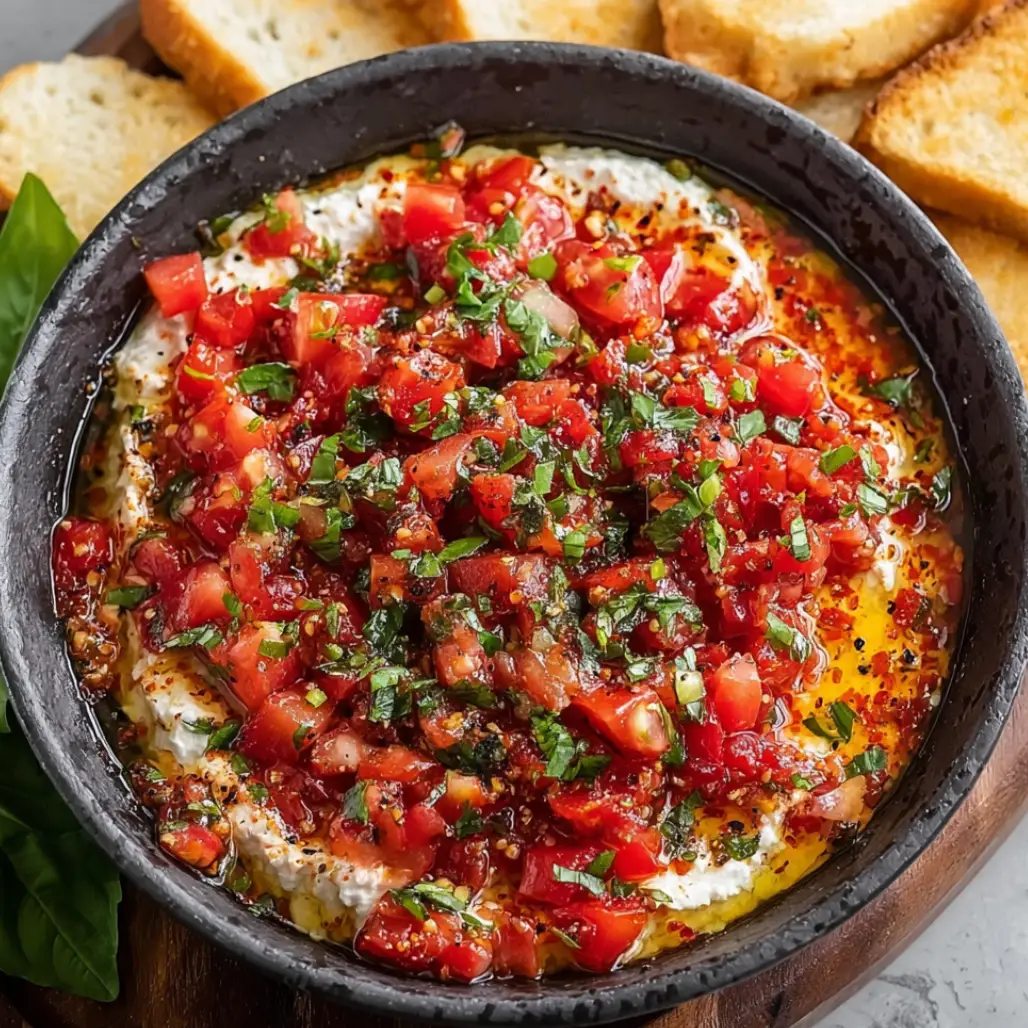| Prep Time: | 15 minutes |
|---|---|
| Cook Time: | 25 minutes |
| Total Time: | 40 minutes |
| Serves: | 4 |
Discover the incredible transformation that occurs when ordinary tofu becomes this spectacular baked lemon pepper tofu masterpiece, because this remarkable recipe elevates plant-based protein into a crispy, golden creation that delivers bold citrus flavors and satisfying texture in every single bite. This extraordinary baked lemon pepper tofu combines the brightness of fresh lemon with the warmth of cracked black pepper because these complementary flavors create a harmony that makes even the most skeptical tofu doubters become enthusiastic converts who crave this dish regularly.
Why Baked Lemon Pepper Tofu Creates Culinary Magic
This incredible baked lemon pepper tofu recipe succeeds brilliantly because it addresses the most common complaints about tofu while showcasing its remarkable ability to absorb flavors and achieve perfectly crispy textures when prepared correctly. The baking method creates a golden, crunchy exterior because high heat draws moisture from the surface while the lemon pepper seasoning penetrates deeply, infusing every piece with zesty, aromatic complexity.
The genius of this baked lemon pepper tofu lies in its simple yet effective preparation technique because the cornstarch coating creates a protective barrier that locks in moisture while promoting browning, resulting in tofu that’s crispy outside and tender inside. The lemon pepper combination works synergistically because the acidity brightens the mild tofu flavor while the pepper adds warmth and depth that creates a more sophisticated taste profile.
This baked lemon pepper tofu proves that plant-based proteins can be just as satisfying and flavorful as traditional options because proper seasoning and cooking techniques transform the humble soybean into a restaurant-quality dish that appeals to vegans, vegetarians, and omnivores alike with its irresistible combination of taste, texture, and visual appeal.
Essential Ingredients for Perfect Baked Lemon Pepper Tofu
For the Tofu Base:
- 1 block (14-16 ounces) extra-firm tofu, drained
- 2 tablespoons low-sodium soy sauce or tamari
- 3 tablespoons cornstarch
- 2 tablespoons lemon pepper seasoning
- 1 teaspoon garlic powder
- 1/2 teaspoon salt
For Enhanced Flavor:
- 2 tablespoons olive oil or avocado oil
- 2 tablespoons fresh lemon juice
- 1 tablespoon lemon zest
- 1/4 teaspoon red pepper flakes (optional)
- 1 tablespoon nutritional yeast (optional)
For Garnish and Finishing:
- 2 green onions, thinly sliced
- 1 tablespoon sesame seeds
- Fresh parsley or cilantro for color
- Lemon wedges for serving
The Art of Creating Baked Lemon Pepper Tofu
Mastering this exceptional baked lemon pepper tofu requires understanding the crucial relationship between moisture control, seasoning penetration, and heat application because these elements work together to create the perfect balance of crispy exterior and tender interior texture. The pressing process proves essential because removing excess water allows the tofu to absorb seasonings more effectively while preventing steam buildup that inhibits proper browning.
The coating technique represents the foundation of success because cornstarch creates microscopic barriers that trap moisture while promoting Maillard reactions that develop complex flavors and appealing golden color. The timing of seasoning application matters significantly because allowing the coated tofu to rest briefly before baking enables the flavors to penetrate while the cornstarch forms a more cohesive coating.
Temperature control throughout the baking process ensures optimal results because consistent high heat creates the rapid moisture evaporation necessary for crispiness while preventing the interior from becoming tough or rubbery. Understanding these fundamental principles enables consistent success with this baked lemon pepper tofu regardless of minor variations in ingredients or equipment.
Step-by-Step Instructions for Baked Lemon Pepper Tofu
Step 1: Prepare the Tofu Foundation
Remove the tofu from its packaging and drain thoroughly, then press between clean kitchen towels or paper towels for at least 15 minutes because excess moisture prevents proper coating adhesion and inhibits browning. Cut the pressed tofu into bite-sized cubes or rectangular pieces because uniform sizing ensures even cooking and creates attractive presentation.
Professional Tip: Press tofu using a tofu press or place heavy objects like books or cast iron pans on top because consistent pressure removes more water than gentle patting alone.
Key Points: Pat the tofu pieces completely dry after pressing because any remaining surface moisture will create steam during baking and prevent the desired crispy texture from developing.
Step 2: Create the Flavor Base
Preheat your oven to 425°F and line a large baking sheet with parchment paper because high heat promotes browning while the parchment prevents sticking and ensures easy cleanup. In a large mixing bowl, toss the tofu pieces with soy sauce until evenly coated because this liquid layer helps the dry seasonings adhere properly.
Professional Tip: Use low-sodium soy sauce because regular soy sauce can make the final dish overly salty when combined with lemon pepper seasoning that often contains salt.
Key Points: Allow the soy sauce to absorb for 2-3 minutes before adding dry ingredients because this brief marinating time enhances flavor penetration and creates better coating adhesion.
Step 3: Apply the Coating System
Sprinkle cornstarch over the soy sauce-coated tofu and toss gently but thoroughly because even distribution ensures uniform crispiness across all pieces. Add lemon pepper seasoning, garlic powder, and salt, then toss again until every piece is completely coated because inadequate seasoning creates bland spots that diminish the overall eating experience.
Professional Tip: Use your hands to toss the seasoned tofu because fingers provide better control and ensure more thorough coating compared to spoons or spatulas.
Key Points: The tofu should look evenly dusty with coating mixture, with no wet or bare spots visible because consistent coverage translates directly to consistent flavor and texture in the finished dish.
Step 4: Optimize for Crispiness
Drizzle the coated tofu pieces with olive oil and toss once more because the added fat promotes browning and creates richer flavor while preventing the coating from becoming too dry during baking. Arrange the pieces in a single layer on the prepared baking sheet, ensuring adequate space between pieces because overcrowding creates steam that inhibits crisping.
Professional Tip: Resist the urge to flip the tofu too early during baking because premature turning can cause the coating to stick to the pan rather than forming a proper crust.
Key Points: Leave at least half an inch of space between tofu pieces because proper air circulation allows moisture to evaporate effectively and promotes even browning on all surfaces.
Step 5: Execute the Baking Process
Bake for 12-15 minutes without disturbing, then carefully flip each piece using a spatula because the initial cooking period allows the bottom crust to set properly. Continue baking for another 10-12 minutes until all surfaces are golden brown and crispy because this second phase completes the browning process and ensures even texture.
Professional Tip: Test doneness by gently tapping a piece with your spatula because properly baked tofu sounds crisp rather than soft when tapped.
Key Points: The finished baked lemon pepper tofu should be golden brown on all surfaces with a firm, crispy texture that gives slight resistance when pressed gently with a spatula.
Step 6: Add Final Touches
Remove from oven and immediately sprinkle with fresh lemon juice and zest because the residual heat activates the citrus oils and intensifies the lemon flavor throughout each piece. Garnish with sliced green onions and sesame seeds because these fresh elements provide color contrast and additional flavor layers that enhance the overall presentation.
Professional Tip: Serve immediately while hot because baked lemon pepper tofu tastes best when the coating is still crispy and the interior is warm and tender.
Key Points: Save some garnishes for individual plates because fresh herbs and citrus elements lose their visual impact quickly and look more appetizing when added just before serving.
Professional Tips for Perfect Baked Lemon Pepper Tofu
Quality ingredients make a significant difference because premium extra-firm tofu holds its shape better during pressing and baking, while fresh lemon pepper seasoning provides more vibrant flavor than older, stale spices. Choose organic tofu when possible because it typically has better texture and flavor compared to conventional varieties that may contain unwanted additives.
Timing proves crucial for optimal results because tofu that sits too long after coating can become soggy, while rushing the pressing process leaves too much moisture that prevents proper crisping. Prepare all ingredients and equipment before beginning because this baked lemon pepper tofu comes together quickly once you start the process.
Oven consistency affects final texture because hot spots can cause uneven browning while insufficient preheating prevents proper initial searing. Use an oven thermometer to verify actual temperature because many home ovens run significantly hotter or cooler than their settings indicate, affecting cooking times and final results.
Creative Variations for Baked Lemon Pepper Tofu
Transform this basic baked lemon pepper tofu into exciting alternatives because customization allows you to explore different flavor profiles while maintaining the essential cooking technique that ensures success. Substitute different citrus fruits like lime or orange because these alternatives create unique flavor combinations that pair beautifully with various cuisines and seasonal ingredients.
Experiment with additional spices because herbs like thyme, rosemary, or oregano complement the lemon pepper base while adding complexity that elevates the dish from simple to sophisticated. Consider different coating options because panko breadcrumbs, crushed nuts, or seeds create interesting textures while maintaining the crispy exterior that makes this preparation so appealing.
For those following specific dietary requirements, this baked lemon pepper tofu adapts easily because gluten-free tamari replaces soy sauce, while different oils accommodate various preferences and restrictions without compromising flavor or texture. Vegan versions remain completely plant-based because tofu naturally contains no animal products, making this recipe inclusive for diverse dietary needs.
Perfect Pairing Ideas for Baked Lemon Pepper Tofu
This flavorful baked lemon pepper tofu pairs beautifully with fresh, light accompaniments that complement rather than compete with its bright, zesty character because balanced meals enhance satisfaction while providing complete nutrition. Consider vibrant salads from https://tastymiddles.com/category/salads/ because crisp greens and acidic dressings create refreshing contrast to the rich, savory tofu.
Start your meal with elegant appetizers from https://tastymiddles.com/category/snacks-appetizers/ because lighter preparations allow the tofu to shine as the main attraction while providing variety and visual interest throughout the dining experience. Complement the meal with thoughtfully chosen sides from https://tastymiddles.com/category/perfect-sides/ because properly prepared vegetables maintain the healthy theme while adding nutritional diversity.
Grain pairings work exceptionally well because rice, quinoa, or farro provide neutral bases that absorb the tofu’s flavorful coating while contributing satisfying substance to the meal. Steamed or roasted vegetables like broccoli, asparagus, or green beans create harmonious flavor combinations because their natural sweetness balances the lemon pepper intensity perfectly.
Discover More Plant-Based Protein Inspirations
Expand your plant-based cooking repertoire with complementary recipes that share similar preparation techniques because mastering fundamental methods enables creative variations that showcase seasonal ingredients and personal preferences. Explore savory sides at https://solushrecipes.com/category/savory-sides/ because vegetables prepared with similar seasonings create cohesive menu themes throughout your meals.
Enhance your culinary confidence with marinades from https://solushrecipes.com/category/flavored-dips-marinades/ because these versatile preparations transform simple proteins into extraordinary dishes that rival expensive restaurant offerings. Consider refreshing beverages from https://solushrecipes.com/category/refreshing-beverages/ because well-chosen drinks cleanse the palate between bites of richly flavored foods.
Complete your menu planning with breakfast options from https://solushrecipes.com/category/breakfast-favorites/ because incorporating plant-based proteins into morning meals creates satisfying, energy-sustaining starts to your day while building confidence with tofu preparation techniques.
Storage Guidelines for Baked Lemon Pepper Tofu
Proper storage techniques preserve both flavor and texture because correctly handled leftovers can provide quick, nutritious meals for up to four days when refrigerated appropriately. Cool the baked lemon pepper tofu completely before storing because hot food raises refrigerator temperatures and creates condensation that affects food safety and quality.
Store in airtight containers to prevent moisture loss and flavor absorption because exposure to air causes the coating to soften while unwanted refrigerator odors can penetrate and alter the taste. Layer pieces between parchment paper because this prevents sticking while maintaining the crispy coating that makes this dish so appealing.
Reheat carefully to restore original texture because gentle oven warming at 350°F revives crispiness better than microwave heating, which creates steam that softens the coating. Avoid freezing because the delicate tofu texture doesn’t survive the freezing and thawing process successfully, becoming spongy and unappetizing.
The Science Behind Perfect Baked Lemon Pepper Tofu
Understanding the cooking process improves results because knowledge of protein coagulation, moisture evaporation, and Maillard reactions helps predict outcomes and troubleshoot problems before they occur. The pressing process works because removing water concentrates the remaining proteins and creates space for seasoning absorption while reducing steam formation during cooking.
Cornstarch coating functions through starch gelatinization because heat transforms the powder into a protective shell that traps moisture inside while creating a crispy exterior surface. The high baking temperature promotes rapid moisture evaporation because quick surface drying prevents sogginess while enabling proper browning reactions.
Lemon pepper seasoning effectiveness depends on volatile oil release because heat activates the essential oils in both lemon zest and black pepper, creating aromatic compounds that enhance flavor perception beyond simple taste alone. Understanding these principles enables consistent success regardless of minor recipe variations or equipment differences.
Troubleshooting Common Baked Lemon Pepper Tofu Issues
Soggy texture results from inadequate pressing or excessive moisture because wet tofu cannot achieve proper crispiness no matter how long it bakes. Press tofu thoroughly for at least 15 minutes and pat completely dry because moisture is the enemy of crispy coating development.
Uneven browning occurs when pieces are crowded together or the oven has hot spots because inadequate air circulation prevents proper heat distribution. Space tofu pieces appropriately and rotate the baking sheet halfway through cooking because even heat exposure ensures uniform results.
Bland flavor happens when seasoning is applied incorrectly or ingredients lack freshness because old spices provide minimal taste impact. Use fresh lemon pepper seasoning and ensure thorough coating distribution because flavor penetration requires direct contact between seasonings and tofu surfaces.
Additional Plant-Based Recipe Inspirations
Continue your culinary exploration with dessert options from https://tastymiddles.com/category/dessert-recipes/ because sweet endings complement savory meals like this baked lemon pepper tofu while providing satisfying conclusions to plant-based dining experiences. Consider fruit-based preparations or light textures because these choices balance rich main courses while maintaining nutritional harmony.
Build confidence with similar protein preparation techniques because mastering tofu cooking enables countless variations that accommodate seasonal ingredients and dietary preferences. Plant-based cooking emphasizes creativity and flavor development because these principles create satisfying meals that nourish both body and spirit while respecting environmental concerns.
Remember that cooking skills improve with practice because each attempt provides valuable learning experiences that enhance your understanding of ingredient interactions, timing, and flavor development that make home cooking truly rewarding and personally fulfilling for long-term success.
Conclusion
This exceptional baked lemon pepper tofu represents the perfect example of how simple ingredients and proper technique can transform humble plant-based protein into an extraordinary dish that rivals any restaurant preparation because it combines bright citrus flavors with satisfying crispy texture in a way that appeals to all dietary preferences. The golden, crunchy exterior and tender interior create textural contrast because the careful balance of moisture control and seasoning penetration delivers complexity that satisfies both comfort food cravings and sophisticated palates.
Whether serving weeknight family dinners or entertaining guests with plant-based options, this baked lemon pepper tofu guarantees impressive results because the vibrant flavors and appealing presentation demonstrate that vegan cuisine can be both nutritious and delicious. The recipe’s adaptability allows for endless customization because ingredient substitutions and flavor variations accommodate personal preferences and seasonal availability without compromising the essential characteristics that make this dish truly memorable and absolutely irresistible to everyone who tries it.









